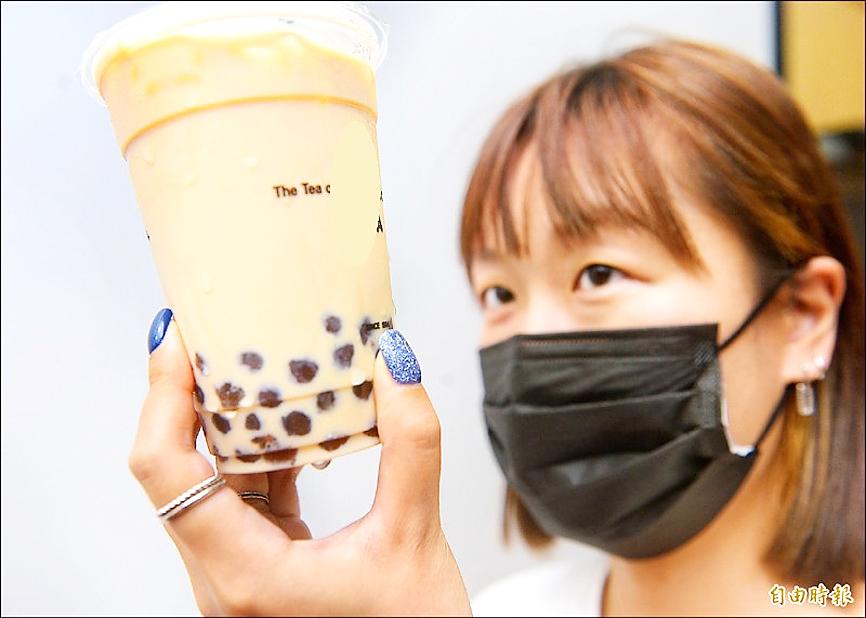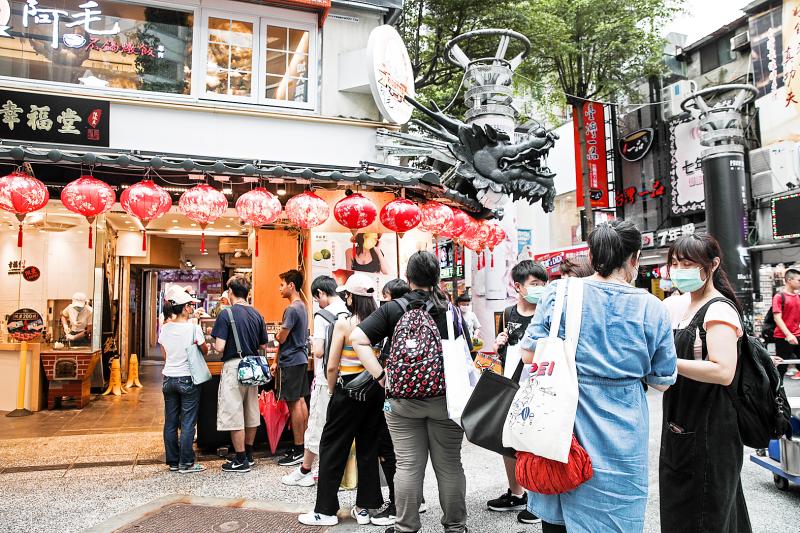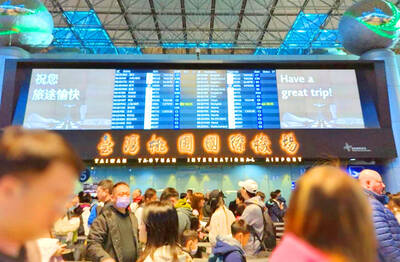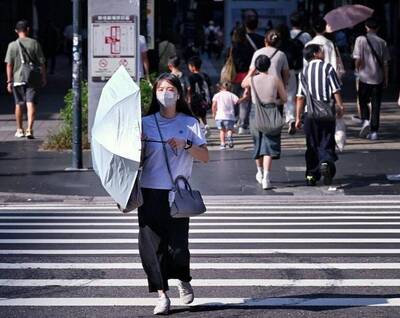The Tea Research and Extension Station is next month to establish a “beverage center” to develop new methods for creating tea-based mixed drinks in response to the expanding popularity of the hand-shaken beverage industry.
“Hopefully, technical investment from the government can help the private sector further develop the market to form a ‘national tea team,’” Council of Agriculture Minister Chen Chi-chung (陳吉仲) said on Saturday of the new center.
Taiwan’s tea-based beverage industry is renowned worldwide, providing a valuable and growing export market for farmers.

Photo: Chang Chia-ming, Taipei Times
In the first 10 months of this year, exports of tea and related products rose 30 percent year-on-year, Ministry of Economic Affairs data show.
Drink stores comprise a significant industry, with sales exceeding NT$58 billion (US$2.09 billion) last year, an 80 percent rise over the past decade.
About 1.02 billion hand-shaken drinks are sold every year in Taiwan, working out to at least 43 cups per person or one every week.

Photo: Bloomberg
Taiwanese tea drinks have changed dramatically over the years, station director Su Tsung-chen (蘇宗振) said.
“It used to be a tea culture, but now it is a tea drink culture,” he said.
To meet demand from an increasing number of tea shops and younger tea drinkers, the station decided to create the beverage center to further expand the growing industry, Su said.
The center would have five to seven people collaborating with private operators to develop drinks using local crops, he said.
As tea is the base for all of the beverages, the center is to research tea blending techniques along with the best ratios for pairing additives such as alcohol or fruit juice, Su said.
The station’s ginger black tea is a prime example, he said.
Ginger must be boiled for a long time to release its flavor, but if tea leaves are boiled along with it, the drink becomes bitter and astringent, he said.
The station therefore pairs ground dried ginger with tea, so the two flavors are extracted at the same rate when it is steeped, he added.
The center would also look at other beverage crops such as coffee, cocoa, mint and chrysanthemum, as well as toppings such as fruit, tapioca pearls and jellies, Su said.
“This is because tea drinks use many mix-and-match ingredients,” he added.
Anything that can be used in a drink would be considered, Su said, adding that the station has developed a method of turning fruit into fine powder.
Apart from its use as a natural coloring or baking ingredient, the powder can also be added to tea to create fruit drinks, he said.

Three Taiwanese airlines have prohibited passengers from packing Bluetooth earbuds and their charger cases in checked luggage. EVA Air and Uni Air said that Bluetooth earbuds and charger cases are categorized as portable electronic devices, which should be switched off if they are placed in checked luggage based on international aviation safety regulations. They must not be in standby or sleep mode. However, as charging would continue when earbuds are placed in the charger cases, which would contravene international aviation regulations, their cases must be carried as hand luggage, they said. Tigerair Taiwan said that earbud charger cases are equipped

Foreign travelers entering Taiwan on a short layover via Taiwan Taoyuan International Airport are receiving NT$600 gift vouchers from yesterday, the Tourism Administration said, adding that it hopes the incentive would boost tourism consumption at the airport. The program, which allows travelers holding non-Taiwan passports who enter the country during a layover of up to 24 hours to claim a voucher, aims to promote attractions at the airport, the agency said in a statement on Friday. To participate, travelers must sign up on the campaign Web site, the agency said. They can then present their passport and boarding pass for their connecting international

Temperatures in northern Taiwan are forecast to reach as high as 30°C today, as an ongoing northeasterly seasonal wind system weakens, the Central Weather Administration (CWA) said. CWA forecaster Tseng Chao-cheng (曾昭誠) said yesterday that with the seasonal wind system weakening, warmer easterly winds would boost the temperature today. Daytime temperatures in northern Taiwan and Yilan County are expected to range from 28°C to 30°C today, up about 3°C from yesterday, Tseng said. According to the CWA, temperature highs in central and southern Taiwan could stay stable. However, the weather is expected to turn cooler starting tonight as the northeasterly wind system strengthens again

Taiwan sweltered through its hottest October on record, the Central Weather Administration (CWA) said yesterday, the latest in a string of global temperature records. The main island endured its highest average temperature since 1950, CWA forecaster Liu Pei-teng said. Temperatures the world over have soared in recent years as human-induced climate change contributes to ever more erratic weather patterns. Taiwan’s average temperature was 27.381°C as of Thursday, Liu said. Liu said the average could slip 0.1°C by the end of yesterday, but it would still be higher than the previous record of 27.009°C in 2016. "The temperature only started lowering around Oct. 18 or 19